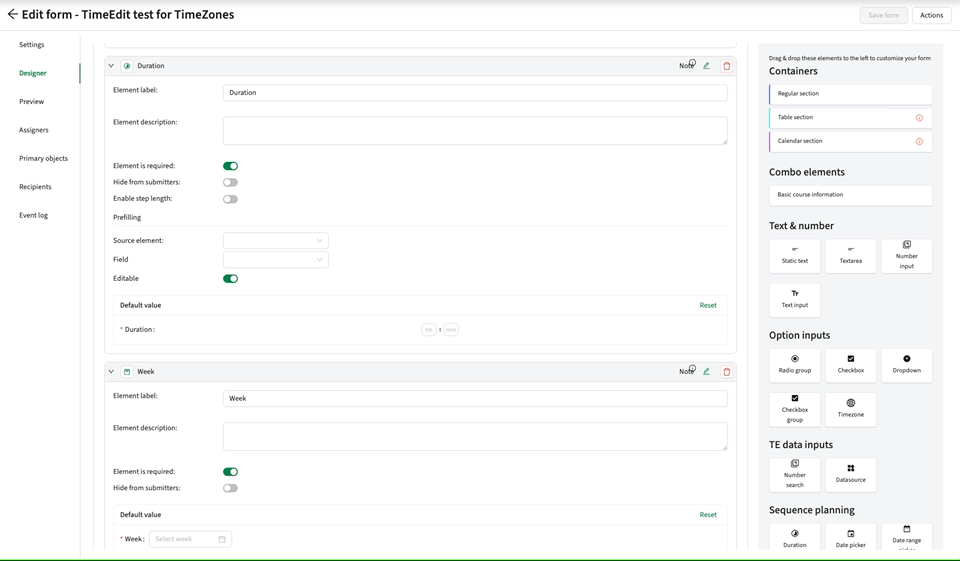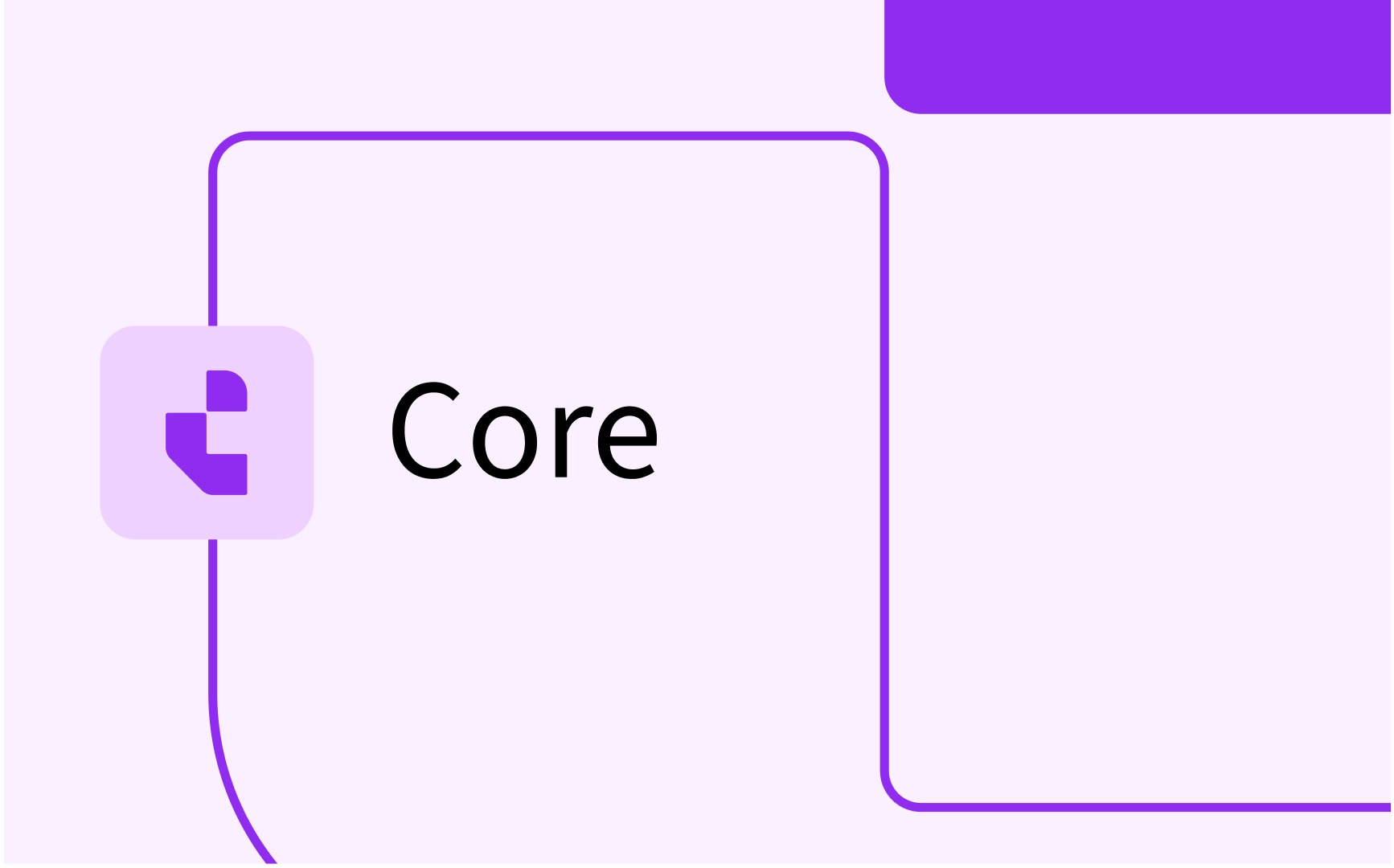How to manage timezones in Preferences and Activity Manager

In Preferences
Forms
When creating a new form, all form dates (such as the form period) are selected using the default timezone configured for the organization. This cannot be changed except by altering the default setting in the configuration. However, if you need to collect activities from multiple timezones, you can manage this by adding a timezone element in the form designer.
Timezone Element
The timezone element can be found in the “Option input” section in the form designer and can be added to any section of the form. If added to:
- Regular section: All activities in the submission will receive the selected timezone.
- Table or calendar section: Different activities within the same submission can have different timezones.
The element consists of the following parts:
- Element label: The header or title of the element shown to the submitter.
- Element description: Additional explanatory text that will be shown to the submitter when hovering over the “?” icon in the header.
- Required element: Makes this element a required field, meaning the submitter cannot submit the form without providing this information.
- Default value: If multiple timezones are configured for the organization, the list of available timezones is limited to the configured ones and cannot be edited in Preferences. A default value for timezone can be set, which will then be pre-selected for all form submissions. This is useful if there are different forms for different campuses.
- Hide from submitters: The element can be hidden from submitters. For example, if there is a common timezone for all activities and submissions in this form (different from your organization’s default timezone), set the common timezone as the default value and then hide the element.

Submissions
As a form submitter in Preferences, regardless of the submitter's location or web browser settings, the activities will always receive the default timezone configured for the organization if there is no timezone element on the form.
If a timezone element is available on the form, the submitter will see a dropdown menu with all configured timezones. The selected timezone will be applied to the activities for which it is selected and passed to the Activity Manager. It is possible to have different timezones for different activity series.
In Activity Manager
Any activity passed into the Activity Manager from Preferences will either use the default timezone configured or the timezone specified in the submission via the timezone element.
The timezone element doesn’t need to be mapped in the activity designer; the timezone information will be presented as one of the default columns in the Activity Manager. This column will be available regardless of whether you have the timezone element on the activities in Preferences or not. Click on the plus icon in the table header to show the column in the table.
The timezone can be edited on the activities in Activity Manager by simply clicking the field.
Manual Scheduling
When manually scheduling from Activity Manager, there will be a verification that the timezone on the activity aligns with the timezone of the user currently scheduling.

The Autopilot
Any scheduling job in Autopilot will handle only one timezone. This means that all activities in a scheduling job must have the same timezone. If any activities have different timezones configured, the job will not start and an error message will be shown.
To schedule activities with different timezones, include them in different jobs. It is possible to filter activities based on their timezone.
In Core
Any scheduling done in Core is always done in the timezone configured for the current user. This means that any scheduling done from the Activity Manager will still end up in the current user's timezone, regardless of the configured timezone on the activities being scheduled.
However, when an activity is selected for scheduling and is configured with a different timezone than the current user, a warning popup will inform the user of the difference. The user should then manually change the timezone before scheduling the activity.
The timezone of any reservation is shown in the Reservation Information side panel or as a column in the Reservation List. This applies to any organization with more than one timezone configured in TE Server.






